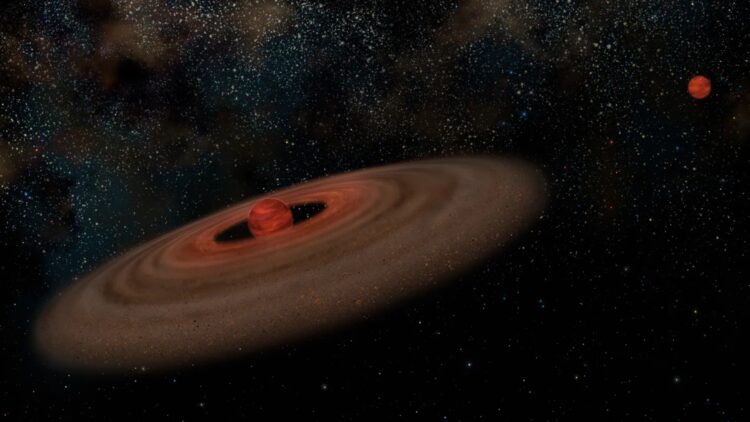If you think you’ve seen it all in space, from black holes swallowing stars to galaxies being born billions of light-years away, get ready for another twist… That’s because astronomers have just discovered a new planet that, besides breaking records, is also disrupting our understanding of how planets are born. And it’s not just its size, but also its rapid emergence and its behavior, which, until now, seemed unlikely.
A newborn giant: A planet breaking all formation records
When we think of planets, the most common image is of ancient worlds, stabilized billions of years ago. Earth, for example, took between 10 and 20 million years to complete its formation, some 4.5 billion years ago. However, now, scientists have found a planet that has defied all timekeeping. Not only did it form quickly, but it is also immense for its age.
And she’s not exaggerating. That’s because this planet was born only 3 million years ago, meaning it would still be in the “baby period” compared to the average age of known planets. And this record-breaking youth gives us something we rarely get: a window to observe planetary formation almost in real time. It’s like watching a construction site still under construction in the middle of space.
TIDYE-1b: A misaligned giant rewriting the rules of planetary formation
Now, we can finally pronounce its name: TIDYE-1b. Discovered by a team from the University of North Carolina at Chapel Hill using NASA’s TESS satellite, this planet is not only enormous for its age, but also exhibits an orbital behavior that intrigues scientists. This is because it has an inclined orbit. Unlike our Solar System, where planets and the Sun are aligned in the same plane, TIDYE-1b rotates at an angle outside the cosmic “assembly line.”
Furthermore, it is extremely close to the star, meaning it orbits its star in just 7 to 9 days. This raises questions about whether planets can form so close or if they migrated there later. Finally, its protoplanetary disk is misaligned. The system still maintains its ring of gas and dust, but off-axis. This suggests that something, perhaps the passing of another star, messed things up during its formation.
It’s also interesting to note that this discovery was almost a stroke of luck. If it weren’t for the tilt of its orbit, the planet wouldn’t have passed in front of the star visible to our telescopes. This even reminds us of NASA’s recent discovery that, due to some specific factors, found the birthplace of planets in a distant galaxy.
TIDYE-1b: Unlocking the mysteries of early planetary evolution and cosmic origins
Observing TIDYE-1b is like opening a photo album of the universe and finding a snapshot of planetary “first steps.” It helps answer questions that still keep astronomers awake at night: Do planets form faster than we thought? Is orbital migration more common early in a star system’s life? Could misalignment of disks and orbits be more frequent than we suppose?
Furthermore, because it is smaller than the young gas giants typically detected, TIDYE-1b may represent a closer, intermediate stage in the evolution of planets in our system. “We try to extrapolate from these other worlds how quickly planet formation might have taken hold in the early solar system,” said Soares-Furtado.
And that’s the most fascinating part of this whole situation. Studying this planet can reveal what happened here billions of years ago, when Earth and its neighbors were still “taking shape.” This could even help us understand what happened throughout the formation of the universe, which reminds us of when experts found “errors” in the universe, which appears to have formed shortly after the Big Bang.


